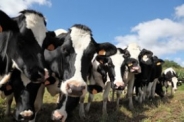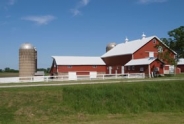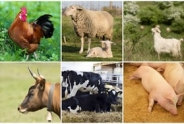Current Topics in Transition Cow Nutrition and Diet
Ron Kuck, Livestock Specialist
North Country Regional Ag Team
March 19, 2016
A shift is now underway in the mindset of dairy farmers to treat transition cows not as a disease opportunity but now considering them as production and reproduction opportunities. Key components in management can be broken down into different management sectors:
Nutritional Management such as adequate physical effective NDF is very important in fresh cows. Some studies suggest feeding higher starch rations in the immediate postpartum period may improve metabolism while other studies suggest lower starch during this period can lead to better performance. Furthermore the optimum starch level may depend on the NDF levels of the postpartum diet (M.M. McCarthy, H.M. Dann, TR Overton; Cornell University, Miner Institute, Cornell University)
Other Nutritional management topics under discussion is tighter control of macro minerals specifically refocusing on calcium metabolism -hypocalcemia- in the transition cow. As stated above in the first paragraph Fresh cow ration starch content is important and how does adding monenesin affect intake, production and energy metabolism? The customary question of are my cows consuming diet as formulated and is still real.
Non-nutritional management such as is a fresh cow group really needed and minimizing stressors are now standard points to consider.
The use of a fresh pen continues to grow in popularity, especially for dairies that
are expanding herd size and/or building new facilities.
A fresh pen and its management can greatly influence fresh cow behavior. A fresh pen typically houses a smaller group of cows from the lactating groups which reduces the social activity and possibly leads to less social stress and more resting. The feed bunk of a fresh pen should be understocked and provide at least 30 inches of space or at least 1 headlock per cow. Limited feed bunk space increased the number of displacements and feeding rates of cows before and after calving in a University of British Columbia study. Fresh cows that were overcrowded at the feed bunk altered their feeding behavior (e.g. increased feeding rate) and increased the risk for health problems associated with slug-feeding in a collaborative study between Miner Institute and the
University of British Columbia. (Heather Dann-Miner Institute http://whminer.org/pdfs/02-16.pdf)
Pulling a transition cow plan together requires more emphasis on real time monitoring at the cow and herd level. Consult with your veterinarian to install monitoring systems in place using physical and technology tools to help identify the need for managerial improvement and to keep all systems a go.
While much as been learned more work still needs to be done. With steady and consistent adoption of what we do know at the farm level, transition cow success is attainable!
Announcements
No announcements at this time.





